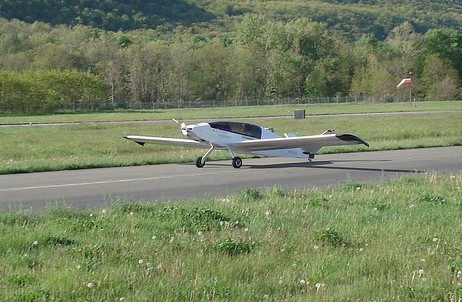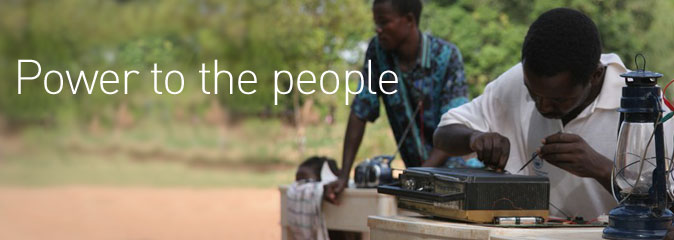Sarah O’Shea has some kind of Tri Car. It is pink, little, a convertible and cute. I really wanted a firsthand perspective. How does it handle? Is it loud? What is the ride like? But she does not seem interested, so I will just point people to places for 3 Wheelers. The funniest and long standing site is:
http://mysite.verizon.net/vze6omtd/jorysquibb/id1.html
He calls himself MoonBeam and he is a hoot. He also gets 72 miles to the gallon. yikes:
How to build Moonbeam, a 100 MPG microcar
How to Build Moonbeam
1: CHOOSING THE DONOR VEHICLES (It takes two, remember?)
It’s good to think well before you choose which motorcycles or scooters to chop up for your microcar. I decided that I wanted the following characteristics: 100 miles per gallon, a four-stroke engine with water cooling; an occasional small second-passenger capacity, but usually one passenger and 6 grocery bags; no gear shifting with hand controls only; an enclosed vehicle with a heater for all-weather operation; easy interior access with lots of light; and finally, a nice looking machine, that you looked back on admiringly as you walk away. All in a budget of $2000, including the donor vehicles and 400 hours of labor. A half-time, half-year project. Ha! What an underestimation!
:}
Then he says a bunch very funny things and offers these helpful websites:
www.micromuseum.com www.ccpc.net/~jaho/3link.html www.3-wheelers.com www.maxmatic and www.rqriley.com
The coolest one is the 3-wheelers site. They have some really cool stuff.
:}
The scooters I chose, I completely stripped, carefully bagging and labeling all parts, and then sawed through the frame tubes right where the tube enters the rear subframe. I used a reciprocating hand power saw, commonly called a Sawzall, and kept handy a large pack of 14 tooth blades. Gasp! It was hard to destroy a beautiful red motor scooter! See photo 1, which also shows what I am calling the subframe.
II: BUILDING A STRONG MINIMAL CHASSIS
I wanted to build a minimal frame first and test the vehicle on the road before I went too far with building the body. As you will see, my idea was to join the scooter rear end into two front ends of the same scooter. See the ‘improvements” page for, in retrospect, an easier way.
I bought an 8’ length of steel rectangular tube which was 2″ X 4″ in section and an eighth inch thick and sawing 45 degree angles created a “U” shaped piece of chassis. I chose 40″ inches as the car’s width, so the sides are 40″ on center and the arms extend 18″ forward, with caps welded on the open ends. This strong main frame shows in Photo 3, the first road test.
A 40″ width, with a wheelbase of about 57″, turned out to be a nice size. But when 2 adults are seat belted side-by-side, THEY NEED TO BE ON FRIENDLY TERMS! It’s better if the second passenger is a child.
I would strongly recommend that you think in terms of a 1.5 passenger vehicle. These are only 10″ tires. There are drum, not disk, brakes. Especially important, the front suspension, which mainly supports the passengers, has limited travel. Two adults going over a large pot hole might well bend something.
You might choose a larger format, but my interest was always to see how small a vehicle I could use with dignity. I might have gone to a 63″ wheelbase and used the extra length for more legroom. But remember: size makes weight. Moonbeam weighs 112 on each front wheel, and 162 on the back, for a total of 386 lbs. It accelerates quickly up to 40 MPH, then slowly on up to 52, but with two adults aboard, it does labor up steep hills.
I didn’t know how to weld, so bought a Hobart Handler “MIG” welding set with helmet, gloves, cart, etc. and had the salesman give me a crash course in welding. Before I started welding the chassis, I forced myself to spend a day practicing on all types of welds on all thickness of steel. Even so, my welds were always amateurish. The MIG welder, which uses inert gas, does make welding a lot easier.
I then welded this “U” chassis to the scooter rear sub-frame, using scrap flat 1/8″ metal gussets to strengthen all connections. On the sub-frame, I also lengthened the rear springs by 1″ to raise the height a little, and then re-installed the motor unit in the sub-frame.
To begin understanding some of the 3-wheel technical stuff, read everything in this site: www.rqriley.com/download.html Especially note all the front end geometry stuff, and the fact that: “The center of gravity should no farther than 35 percent of the wheelbase from the side-by-side wheels of a three wheeler”. This means that the driver will sit further forward than you might imagine.
To position the two front forks, I built a stand, shown in photo 2, which supports both forks at 40 inch spacing, angled together at the top 1-2 degrees (camber) and leaning back 10 degrees (caster). The motor scooter caster of 27 degrees would make steering too hard. With this wooden stand screwed with dry wall screws to the rectangular plates which already exists on the Honda fork tubes, and which show in front of my right shoulder in Photo 1; the stand supports the forks as I eventually wanted them. I then removed the forks, bearings, tires, etc. and sawed off the level part of the round scooter frames parallel with caps on the front of the chassis I had just made, and welded them to the chassis arms. The round scooter down-tube is also an eighth inch thick, which makes for easy welding. Then I put the forks back in, cleaning and greasing the steering head bearings, removed my wooden stand and jumped merrily on the chassis to test it. Hooray! A rolling chassis.
III. SETTING UP THE STEERING
I wanted to steer with handlebars using all the original Honda electrical controls, brakes, throttle, as well as the speedometer cluster. This is such a major simplification! So I welded a temporary steel box channel between the steering heads, and pivoted the old Honda handlebars in the middle. I welded flat steel ‘steering plates’ leading forward from the scooter’s forks right below the lower bearings, spacing them outward 23 degrees from straight ahead. These show well in photo 4. This would give correct “Ackerman” angles to the wheels when fully turned, the wheel on the inside of the turn needing more angle than the outer.
Another way to calculate this 23 degrees, is that the outer ball joint end of each radius rod, sighted straight through the lower steering bearing, should point exactly to the ‘contact patch’ the rear wheel makes with the road. On your car, using a different tread and wheelbase length, it won’t come out 23 degrees.
Later in construction, when I fine-tuned the passenger position, I removed the crossbar mentioned above, which was too obstructive, and used a post jutting out toward the driver from the curved forward frame member. See Photo 7. This maximized the ease of getting in and out. The radius rods themselves are the limiting item for legroom.
Then, after welding in the crossmember, and reassembling the forks, with upper and lower bearings well cleaned and greased, I created adjustable “radius rods” using 3/8″ hardware store rod, which I threaded to match the spherical ball joints, called Heim fittings”, which I bought at the local auto parts store. ( Dorman 116-203, box of 5) I carefully drilled out the plates leading forward from the forks, using a 6″ radius and 23 degrees outward spread and assembled the radius rod to two back-to-back Heim fittings on an arm from the handlebars. These fittings are mounted exactly one above the other in order not to change the toe-in length when the wheels are turned. See Photo 7
To set the correct toe-in, I then lashed two sticks along the outside of each front tire and adjusted the rods until the separation of the sticks behind the tire was 1/8″ more than in the front of the tire. Hooray! The wheels turned smoothly together
IV: ROAD TESTING THE VEHICLE
The beauty of this cycle-car, is that it uses so much of the wonderful engineering of the original Honda. I simply needed to reconnect the wiring harness, reattach the speedometer to the handlebars, then attach the horn, ignition switch, fuse box, and radiator to my temporary front cross member, put a battery box near the engine, and press the starter button. VROOM!
But I needed at least one brake for the road testing, at best a rear brake. So, from my local scooter repair man, I got a Honda Aero 80 rear brake cable which was long enough to go to a modified bicycle hand brake which i clamped between the left side handlebar electric cluster and the rubber hand grip. I knew I wanted left side to be the rear brake, and right to be front as on most mopeds. This allows you to blip the throttle while braking the rear wheel. Once I had a good rear brake functioning on the left side lever, I donned my warmest clothing (on Groundhog’s day here in Maine) and pushed the beast out in the weak winter sun. Three intense months of building had passed! See photo 3 for the original road test.
I had registered and insured the vehicle as a motor scooter, using the donor vehicle information, so with new plates, I slowly circled my immediate block and gradually traveled 10 miles. The steering was far too twitchy, but otherwise, given the lack of weight, which the eventual body would provide, the car handled beautifully up to my personal limit of 40 MPH.
It was amazing to be driving a vehicle you had created yourself. There was little feeling of safety or creature comfort. The wind chill was bracing. But what a great boost to morale! Now I could again engage in such a long-winded and humbling project.
Back in the garage, I shortened the radius of the handlebar steering arm from 6″ to 3″ and tested the car again. This time the handling was steady and predictable and the car could still “U” turn in the width of a road. The handlebars moved a quarter circle each side of center. I now felt confident enough to begin on the body, so I removed all the stuff I had installed for the road test. You might be able to see in the picture that I was using conduit for the passenger foot support, held up by red hold-down straps. Not reccommended at 40MPH!
:}
There is soooo much more that I could add from his site. He is so funny. So earthy and he makes one telling point. He and everyone else in the alternative ground transportation systems are building Trikes because as soon as you add the 4rth wheel they become cars and the whole world changes. Hell you could just convert your car to Natural Gas. It is real easy to do. In fact Iran is in the process of shifting every vehicle in the COUNTRY to natural gas so they can sell us expensive oil. If you do that here you have to get a permit and inspection from the EPA for every vehicle.
:}









